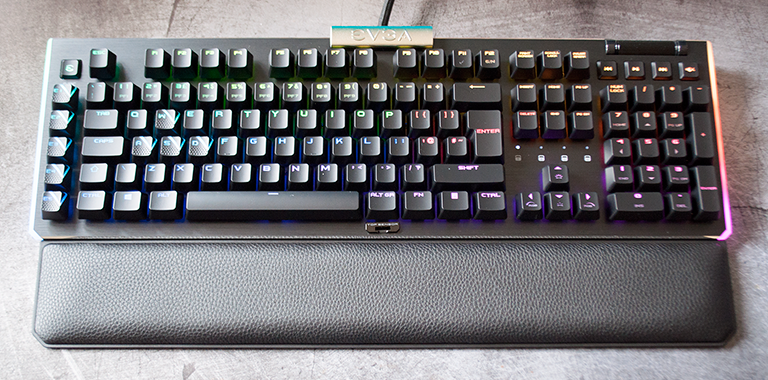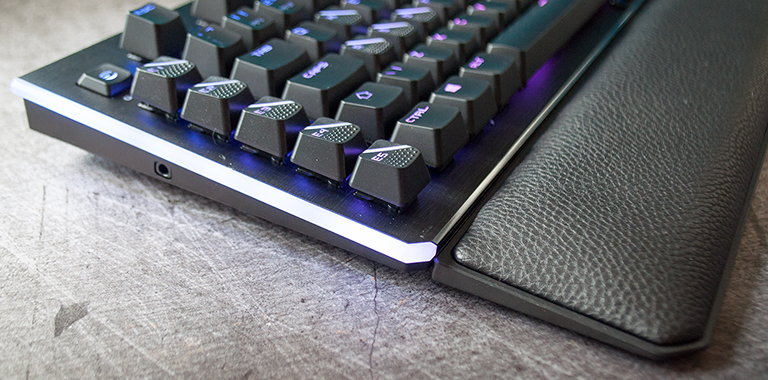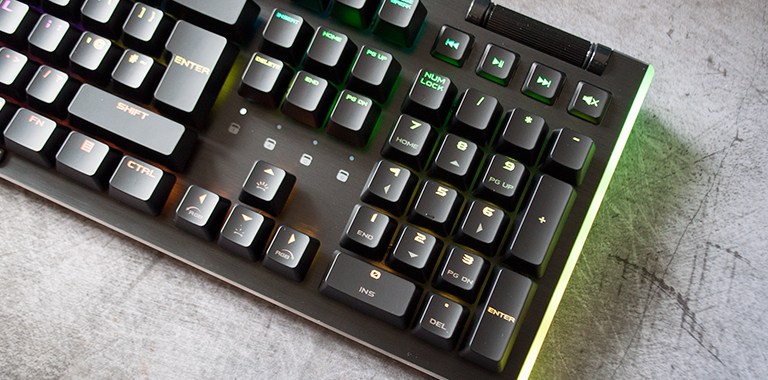Introduction
EVGA is best known for its high-quality range of Nvidia graphics cards, and with over two decades of experience, that reputation is well deserved. The firm's custom cards typically rank high in terms of performance and desirability, yet while it has GPUs down to a tee, the California-based outfit has at times struggled to replicate that success in other fields.
And not through a lack of effort, we should add. Over the years EVGA has tried its hand at everything from CPU coolers to chassis and full-blown gaming laptops, but each has been met by a mixed response from consumers and reviewers alike. Plenty of false starts, however EVGA is not to be dissuaded, and in 2021 it is doubling down with a new line of gaming peripherals headlined by the Z20 keyboard.
Priced at $175 (€140), the Z20 sets its sights on the upper-end of the keyboard market and attempts to stand out from the crowd with an extensive feature-set that risks attempting to cover as many bases as possible without really excelling in any one area.
Dimensions of 151mm x 445mm x 38mm are about right for a keyboard outfitted with a column of dedicated macro keys, and though it's hard to tell whether the brush-effect top plate is aluminium or plastic, overall build quality and rigidity is good. RGB light bars on either side are a tell-tale sign of a gaming solution, and they do a decent job of displaying true colours along a consistent spread of light. EVGA's aesthetic is in keeping with many of the established competitors, though we would prefer a more subtle company logo; the plastic protrusion at the top of the keyboard looks bulky and out of place.
Curious about that nubbin below the AltGr key? That's a time-of-flight proximity sensor that can be used to trigger certain actions based on user movement. We aren't talking complex hand gestures or biometric recognition, but the keyboard does know when a person is present, so stepping away can, for example, put the computer into sleep ready for it to awaken on your return. In practise the sensor works well enough, but we struggle to think of a scenario in which we'd actually choose to us it. Disabling the RGB or locking the computer when away, perhaps, but it has the feel of a solution looking for a problem.
Trying to do more, or something different, doesn't always have the desired effect. That's certainly true of the '4D Bump' keycaps present on the macro and WASD keys. Stylised with a diagonal backlit line and a raised pattern on each keys' bottom half, they are easily identifiable but off-putting as a result of the half-textured design. A set of regular (3D?) keycaps are included in the bundle for these to be swapped out, but EVGA sadly hasn't opted for higher-quality PBT material; every available keycap is ABS plastic that quickly develops an unwanted shine.
At this price point it becomes easier to pick fault, and the Z20 provides further opportunity. The full-length leatherette wrist rest may look comfortable, however the airy cushioning is lacking in filling, to the extent that it can squeak like a dog's toy when depressed, and the magnets used to secure the wrist rest to the keyboard don't entirely eliminate unwanted movement. The whole keyboard feels more comfortable when raised on its two-step rear feet, which helpfully provide a choice of typing angle.
Continuing the try-something-different theme, there's a 3.5mm audio jack on the laptop's left side. Passing audio does result in more connections to the host PC - the 2m braided cable terminates in two USB-A plus an audio jack - but with the addition of the USB 2.0 port on the keyboard's top edge, it's helpful being able to locally attach a wide variety of USB/3.5mm headsets.
Given the audio jack, it is no surprise to find dedicated multimedia keys and a volume scroller located above the numpad. We're of the opinion these ought to be present on any full-size solution, but EVGA's implementation again leaves something to be desired. Though we appreciate that the keys are styled in keeping with the rest of the board, the low-profile mechanism offers only a tiny amount of travel that is abrupt and unsatisfactory to use; no such problems with the scroll wheel which glides comfortably and wraps around the top of the keyboard for use from above.
Might the underlying hardware be the Z20's saving grace? EVGA's keyswitch of choice is the Light Strike LK optical-mechanical previously featured in Bloody gaming keyboards. Available in a choice of linear or clicky flavours, the switch actuates at 1.5mm with a negligible debounce time of less than 0.5ms and a durability rating of 100m keystrokes. Our linear review sample feels consistently accurate and requires 45g of force to actuate halfway along the 3.0mm travel distance, while those who opt for the clicky variant can expect a total of 3.5mm travel and a 50g actuation force.
The keyswitches themselves work well, and the optical-mechanical design ought to play well with the maximum 4,000Hz polling rate powered by an Arm Cortex M33 processor. A 4x speed increase over most gaming keyboards looks particularly tasty on paper, and matches what's on offer from the likes of the Corsair K100, but while we suspect there is a measurable benefit in certain scenarios, we're willing to bet that most gamers would struggle to appreciate any difference during real-world use.
EVGA's hardware holds promise from a performance perspective - optical-mechanical keyswitches in a 4,000Hz keyboard are about as good as it gets - but there is a caveat here, too, in that the key stabilisers aren't great. There is more wobble than on premium competitors, and the already-noisy keys have a tendency to ping during use.
Has the graphics card specialist bitten off more than it can chew? It certainly feels that way, but let's take a look at the accompanying software before passing judgement.













